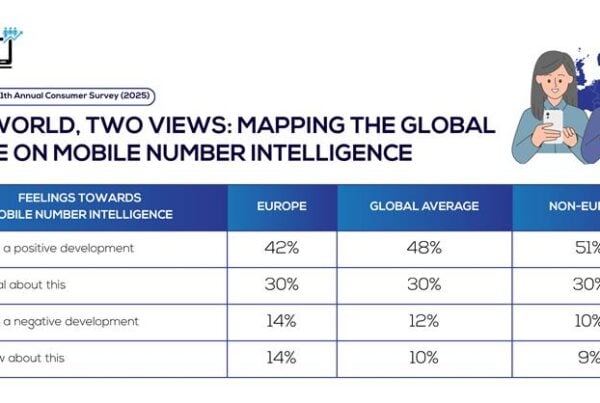MEF Programme Lead for Connectivity & Wholesale, Isabelle Paradis, highlights that as telecom networks evolve, a new wave of intelligence is emerging—one that moves beyond automation toward true autonomy. Agentic AI could transform how wholesale telecom operates, from decision-making to collaboration across networks. At a recent MEF session, industry leaders explored what this shift could mean for the future of connectivity and operations.
As digital transformation accelerates across telecom networks, one area remains surprisingly manual: the wholesale layer.

From interconnect negotiation and fraud detection to service orchestration and settlement, many critical processes still rely on human operators, siloed systems, and static rules. But that may soon change.
At the MEF Connectivity & Wholesale Interest Group meeting in July 2025, Sam Baker from Juniper and members explored how Agentic AI – a new class of artificial intelligence capable of autonomous, goal-driven decision-making – could fundamentally reshape the way international telecom businesses operate.
This whole revolution would be empowered by software agents that can reason, plan, and act on behalf of telecom players across the value chain.
So how might Agentic AI change the wholesale game?
As the wholesale world becomes programmable, it will soon become agentic. And those who act now won’t just automate the business – they’ll reshape it.”
Defining Agentic AI: Beyond the Algorithm
Unlike traditional AI systems that require constant prompting or are confined to narrow tasks, Agentic AI refers to systems that can pursue objectives, adjust to changing conditions, and collaborate with other agents or systems without human intervention.
In practice, these AI agents could be deployed across key layers of the wholesale business – each with a specific function. For example:
- Routing Agents that monitor live network performance, regulatory changes, and pricing to adjust routes dynamically.
- Fraud Agents that ingest real-time data, share alerts with other agents, and take action before human teams or non-real-time systems even notice anomalies.
- Commercial Agents that negotiate interconnect agreements, optimise cost models, or respond to market shifts autonomously.
In a sense, wholesale telecom could evolve from a business run by humans – to one where networks and platforms negotiate, optimise, and protect themselves.
Why Now? From APIs to Autonomy
The rise of programmable networks, rich APIs, and cloud-native infrastructure is creating fertile ground for Agentic AI.
As more systems expose real-time data and control mechanisms – via network APIs, smart routing protocols, or programmable billing interfaces – AI agents can begin to interact with them directly. This enables a new layer of automation that is not just reactive, but strategic.
In fact, some major telecom players are already piloting agentic platforms to handle customer queries, billing disputes, and plan recommendations autonomously -suggesting that these technologies are maturing from support layers into operational infrastructure. In the international context, this matters even more.
Imagine agents managing A2P traffic in real-time based on regional trust scores, or negotiating roaming rates based on usage patterns, performance metrics, and projected demand – in real-time all without triggering lengthy human workflows.
Potential Industry Impacts
The integration of Agentic AI into the wholesale ecosystem could therefore trigger shifts in several areas:
- Operational Efficiency: Reducing manual intervention in routing, pricing, or settlement could free up teams for more strategic work, accelerating time-to-market and reducing cost-per-transaction.
- Real-Time Risk Management: Agentic fraud detection and compliance enforcement could reduce losses and regulatory exposure, particularly for international traffic.
- Dynamic Interconnection: Agents could coordinate capacity across networks on-demand, enabling more fluid, usage-based commercial relationships across multiple services and on-the-fly route optimization.
- Dynamic Pricing and Competitive Pressure: As agentic systems mature, one of the most profound shifts may be in how wholesale services are priced and traded.
Traditionally, pricing in wholesale telecom has followed relatively static models – built around bilateral agreements, volume tiers, and rate sheets. Agentic AI would enable a revolution by empowering pricing that is:- Dynamic – adjusting in real time to quality of service, congestion, or fraud risk.
- Granular – tailored by individual transaction.
- Transactional – executed autonomously by agents sourcing termination routes or negotiating interconnects on the fly.
This revolution could put pressure on wholesalers relying on margin spreads or volume locking. But it also creates opportunity: those who can design agent-driven pricing strategies could offer superior transparency, responsiveness, and margin control.
- AI-Native Business Models: Wholesale players could also begin to sell not just bandwidth, but intelligent services – such as on-the-fly optimisation, AI-managed SLA enforcement, or fraud-as-a-service protection models.
Challenges Ahead: Trust, Transparency, and Interoperability
The promise of Agentic AI is clear, but so are the challenges.
Agent Identity and Governance
If AI agents are making commercial or technical decisions on behalf of a telecom operator, several critical questions arise:
- Who provisioned the agent?
- How do you verify its identity and authority?
- Can its actions be traced or revoked?
One emerging approach is to root agent identity in telecom-grade infrastructure – such as secure eSIMs or digital certificates. This would allow operators to:
- Provision agents securely, with assigned permissions
- Anchor them in established authentication systems
- Monitor and audit activity through secure logs
This model aligns with telecom’s existing trust frameworks and may become the backbone of secure agent networks in the future.
Semantic Alignment and Agent Conflict
Another challenge is ensuring that agents across companies and networks understand each other’s policies, goals, and constraints. Without shared definitions and negotiation protocols, intelligent agents risk misunderstanding agreements or triggering conflicts.
MEF and other member organizations will likely play a critical role in defining common semantics, protocols, and behavioral boundaries for agents operating in the wholesale ecosystem.
What This Means for Wholesalers
For Wholesalers, Agentic AI presents both risk and opportunity:
- Risk -because competitors who deploy effective agentic systems may gain significant speed, cost, and intelligence advantages.
- Opportunity – because early adopters can redefine the role of wholesale by offering AI-enhanced, programmable services that go beyond transport.
This is an inflection point. As telecom moves toward API-driven interoperability, the next logical layer is goal-driven autonomy. And those who invest early in agent readiness will be best positioned to lead.
A Call to Action
Agentic AI is no longer a distant concept. The architecture is taking shape and the use cases are surfacing.
Now is the time to:
- Explore internal agentic use cases across fraud, pricing, or network ops.
- Participate in MEF-led conversations on governance, identity, and inter-agent communication.
- Rethink how intelligence, not just connectivity, becomes a wholesale value proposition.
As the wholesale world becomes programmable, it will soon become agentic. And those who act now won’t just automate the business – they’ll reshape it.





